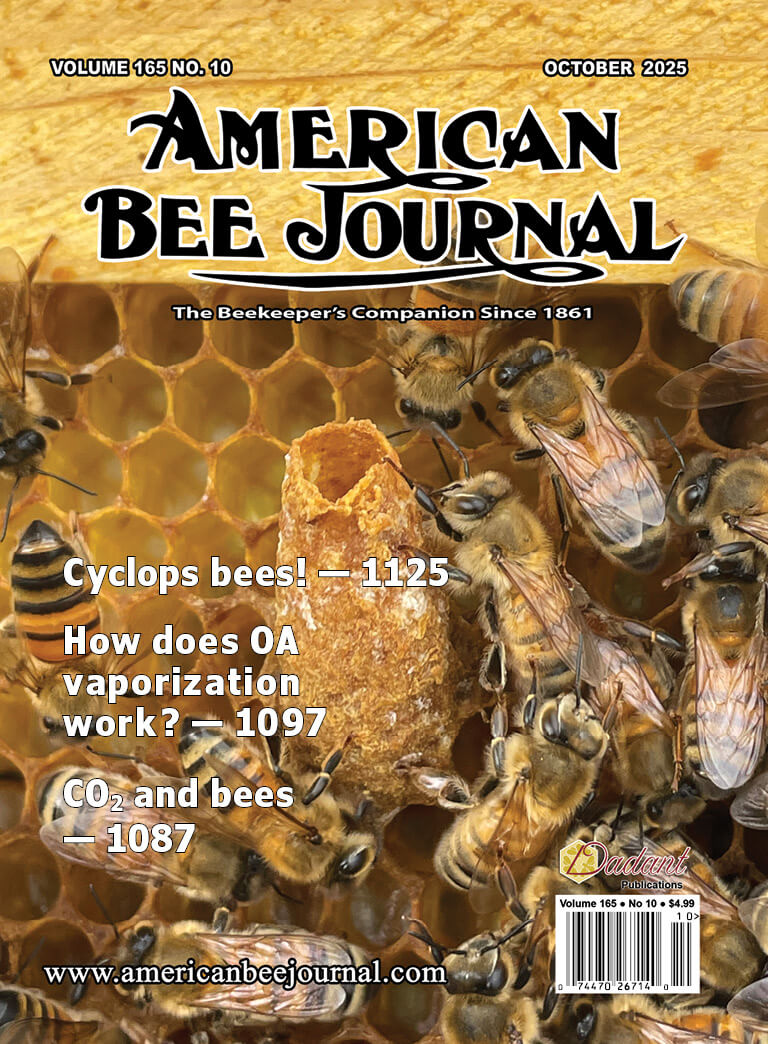Honey Bee Biology
U.S. Queen Rearing History
We think of the modern queen rearing industry in America as a southern enterprise with important western and Hawaiian contributions. In the 1800’s queen rearing was done mostly in the northeast before its southern shift.
Back then to increase queen production, beekeepers needed new methods besides simply dequeening colonies and harvesting the resulting emergency queen cells. In 1883, before grafting larvae became an accepted practice, Henry Alley of Wenham, Massachusetts wrote The Bee-Keeper’s Handy Book: Or Twenty-Two Years of Queen Rearing Experience (see Figure 1). This was a queen rearing technical book, although many new beekeepers bought it. In about 18 months 2,000 copies of the first edition sold, considered “gratifying” by Alley as related in the third edition (1885) of his book.
To start the queen cells, Alley used a non-grafting technique. Using new comb taken from a breeder queen colony, containing eggs or newly hatched larvae, he sliced the comb into rows of single cells (Figure 2, above). Next, he cut down the cell walls leaving only one quarter of an inch of the cell wall, thinking the shorter worker cells would be easier to turn into queen cells. To keep the bees from joining two queen cells together, he squashed every other egg in the cells with a wooden match. Using melted wax, he attached the comb strips to the lower edge of combs, which had been cut back, leaving plenty of space below for the mature queen cells over the bottom bar of the frame. The prepared combs were given to a swarm box.
Alley’s early version of a swarm box was a strong colony confined with only some of its honey and pollen, no brood or queen. (His swarm box resembled a modern five-frame nuc box.) With a screen top and bottom for ventilation, the swarm box stayed in a cool cellar waiting for at least 10 hours. Alley said he would make up the swarm in the morning and put in the prepared frames at night, probably one or two, usually getting about 20 – 25 queen cells (Figure 2, below). However, he warned about letting the colony complete too many queen cells. Depending on the rearing conditions, finishing a dozen queen cells or fewer was better, saying those queen cells were equal to or superior to natural queen cells built for swarming.
When Alley put prepared combs in the swarm box, it went on the old hive stand with the entrance open for bee flight. When conducted properly, even today it is a clever way to rear some extra queens. (A version of the swarm box still exists in modern queen rearing to help start numerous grafted queen cell cups.)
Alley’s book described a comprehensive queen rearing system that could be implemented on a small commercial scale. He had a swarm box to start and finish his queen cells, mating nucs to mate the queens, and his book had valuable information on queen introduction. For a time, Alley’s system of queen rearing became popular, and he was well known.
I have used Alley’s queen rearing system, growing the queen cells in my observation hives so I could take photographs. The brood comb I used had grafting age larvae (less than 48 hours old) and eggs. I did not squash every other larvae to demonstrate the frequent problem of the queen cells becoming connected together that vexed Alley for some time. The brood comb I used had virtually no cocoons. It was built mainly from recycled wax, which had a light brown color, rather than newly secreted wax, which would have been white. The piece of comb for the strips originated as a straight piece of burr comb found between two main combs. I sliced it up with a single edge razor blade, trying to leave a …


